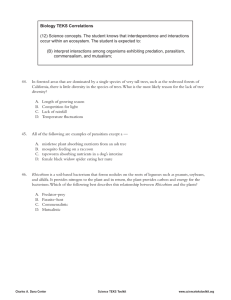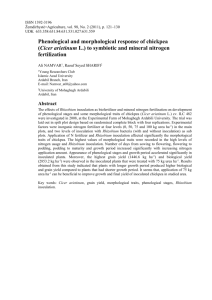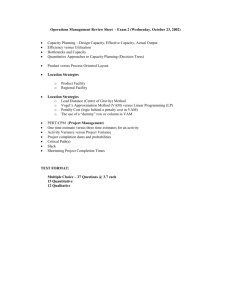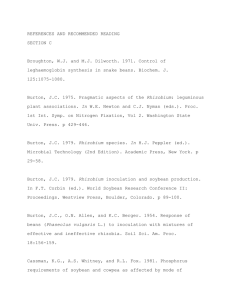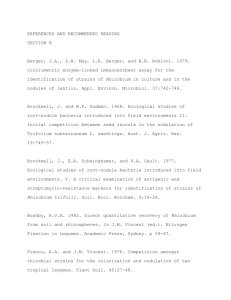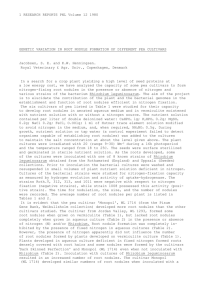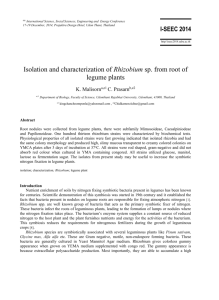Indian Streams Research Journal
advertisement
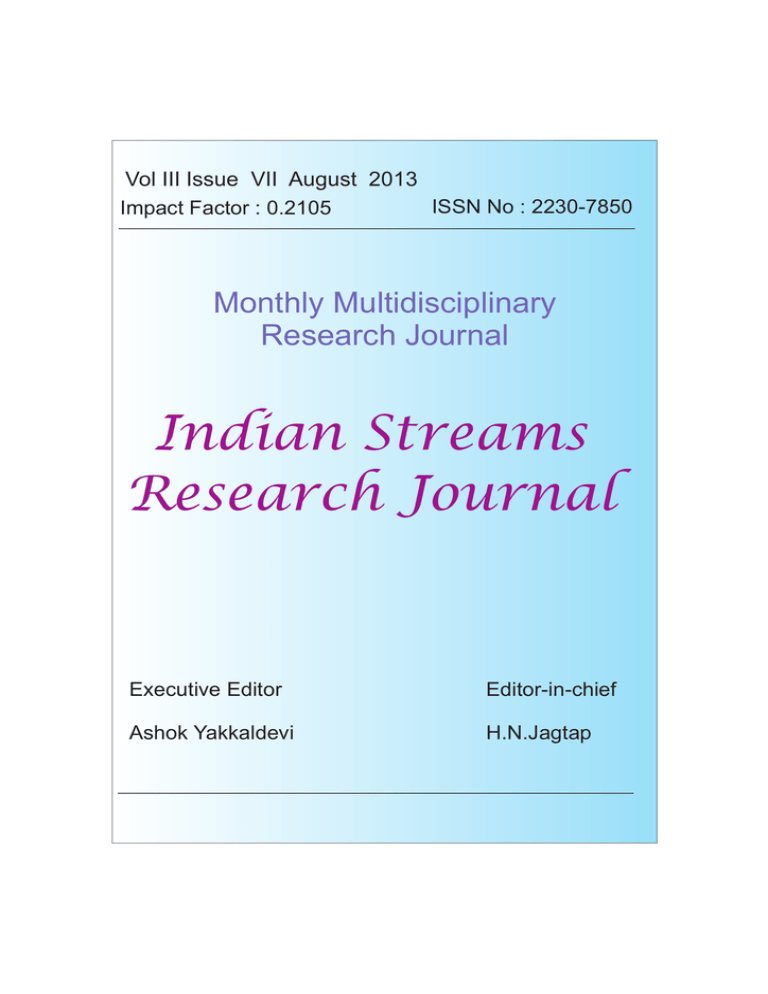
Vol III Issue VII August 2013 ISSN No : 2230-7850 Impact Factor : 0.2105 ORIGINAL ARTICLE Monthly Multidisciplinary Research Journal Indian Streams Research Journal Executive Editor Editor-in-chief Ashok Yakkaldevi H.N.Jagtap IMPACT FACTOR : 0.2105 Welcome to ISRJ RNI MAHMUL/2011/38595 ISSN No.2230-7850 Indian Streams Research Journal is a multidisciplinary research journal, published monthly in English, Hindi & Marathi Language. All research papers submitted to the journal will be double - blind peer reviewed referred by members of the editorial Board readers will include investigator in universities, research institutes government and industry with research interest in the general subjects. International Advisory Board Flávio de São Pedro Filho Federal University of Rondonia, Brazil Hasan Baktir Mohammad Hailat English Language and Literature Dept. of Mathmatical Sciences, University of South Carolina Aiken, Aiken SC Department, Kayseri Kamani Perera 29801 Regional Centre For Strategic Studies, Sri Ghayoor Abbas Chotana Lanka Department of Chemistry, Lahore Abdullah Sabbagh University of Management Sciences [ PK Engineering Studies, Sydney Janaki Sinnasamy ] Librarian, University of Malaya [ Anna Maria Constantinovici Catalina Neculai Malaysia ] AL. I. Cuza University, Romania University of Coventry, UK Romona Mihaila Spiru Haret University, Romania Ecaterina Patrascu Spiru Haret University, Bucharest Delia Serbescu Spiru Haret University, Bucharest, Romania Loredana Bosca Spiru Haret University, Romania Anurag Misra DBS College, Kanpur Titus Pop Fabricio Moraes de Almeida Federal University of Rondonia, Brazil George - Calin SERITAN Postdoctoral Researcher Horia Patrascu Spiru Haret University, Bucharest, Romania Ilie Pintea, Spiru Haret University, Romania Xiaohua Yang PhD, USA Nawab Ali Khan College of Business Administration Editorial Board Iresh Swami Pratap Vyamktrao Naikwade ASP College Devrukh,Ratnagiri,MS India Ex - VC. Solapur University, Solapur R. R. Patil Head Geology Department Solapur University, Solapur Rama Bhosale Prin. and Jt. Director Higher Education, Panvel Salve R. N. Department of Sociology, Shivaji University, Kolhapur Govind P. Shinde Bharati Vidyapeeth School of Distance Education Center, Navi Mumbai Chakane Sanjay Dnyaneshwar Arts, Science & Commerce College, Indapur, Pune N.S. Dhaygude Ex. Prin. Dayanand College, Solapur Narendra Kadu Jt. Director Higher Education, Pune K. M. Bhandarkar Praful Patel College of Education, Gondia Sonal Singh Vikram University, Ujjain Rajendra Shendge Director, B.C.U.D. Solapur University, Solapur R. R. Yalikar Director Managment Institute, Solapur Umesh Rajderkar Head Humanities & Social Science YCMOU, Nashik S. R. Pandya Head Education Dept. Mumbai University, Mumbai Alka Darshan Shrivastava G. P. Patankar S. D. M. Degree College, Honavar, Karnataka Shaskiya Snatkottar Mahavidyalaya, Dhar Maj. S. Bakhtiar Choudhary Director,Hyderabad AP India. Rahul Shriram Sudke Devi Ahilya Vishwavidyalaya, Indore S.Parvathi Devi Ph.D.-University of Allahabad S.KANNAN Ph.D , Annamalai University,TN Awadhesh Kumar Shirotriya Secretary, Play India Play (Trust),Meerut Sonal Singh Address:-Ashok Yakkaldevi 258/34, Raviwar Peth, Solapur - 413 005 Maharashtra, India Cell : 9595 359 435, Ph No: 02172372010 Email: ayisrj@yahoo.in Website: www.isrj.net Satish Kumar Kalhotra Indian Streams Research Journal ISSN 2230-7850 Volume-3, Issue-7, August-2013 “studies On Legume-rhizobium And Mycorrihizal Interaction Withspecial Reference To Phaseolusradiatusl. And Phaseolus Aconitifoliusjacq.” Sunil A. Gosavi Sathaye College, Dixit Road Vile-Parle (E) Mumbai.Maharashtra Abstract:The study was initiated to determine the influence of VAM fungi on a Rhizobium- legume interaction. The pot culture experiment was conducted during rabbi season with seed of Phaseolu sradiatus.L.and PhaseolusaconitifoliusJacq.and Leonard jar experiment was conducted for Phaseolusa conitifolius.The different inoculations of Rhizobium and Mycorrihizawere incorporated. During the period of experiment, samples were analysed for nodule numbers, dry weight of nodules,freshweight, dry weight of plant, yield of pods, and length of plant and percentage of Mycorrihizalcolonization. The results revealed that dual inoculation of Rhizobium with VAM enhanced seed yield of chickpea and golden- green gram. Keyword:PhaseolusradiatesL,PhaseolusaconitifoliusJacq.Glomusfasciculatum,VAM,Rhizobium, Crop yield, Rhizobium-legume interaction, Leonard-jar experiment. INTRODUCTION: In soil microbiology new area have received the attention over the hundred years of subject's history as the fixing symbiosis that exists between plants of Leguminosae and Rhizobial (Harris 1988) and forming nodules on them.Biofertilizer provide a means to keep together two compatible partners. A producer of biofertilizer's therefore must seek out revalent basic information such as soil type, crop rotation, allelopathic effects, and cultivars grown in the region and choose a suitable diazotroph that will have positive interaction with host genome etc. Mycorrihizais greatly defined as a composite structure formed by nutritional associations between fungal hyphae and roots of higher plant. Frank who first noted the extensive of such a characters association in the root of Cupuliferous plant in 1885 coined the term "Mycorrhiza”. Subsequently mycorrhizawas found to occur in roots of many other plants including both Gymnosperms and Angiosperms, and in certain Bryophytes and Angiosperms, and in certain Bryophytes and Pteridophytes. The mycorrhiza are vital for uptake and accumulation of ions from soil and translocation because of their high metabiolic rate and strategically diffuse distribution in the upper soil layers. In this paper the effectsof Rhizobiumand VAM on the yield pattern of chickpea and green Golden gram have been given. The soil bacteria such as Rhizobia have ability to cause infection in root tissues of the compatible host plant of legume and start the formation of nitrogen fixing nodules (Stougaard, 2000; Prell and Poole, 2006). It is the site for symbiotic nitrogen fixation formed because of series of interactions between Rhizobium and leguminous plants. Most Rhizobium isolates can nodulate more than one host plant species, while several different bacterial species are often isolated from a single legume host plant (Cooper, 2007). Vesicular ArbuscularMycorrhizal (VAM) fungi form a symbiotic relationship with the host by colonizing the roots. Associative effects of VAM with rhizobia have been well-documented. Legumes are generally nodulated by rhizobia but many legumes grow poorly and failed to nodulate even with the rhizobial inoculation in autoclaved soil unless they were inoculated with mycorrhizaalso. The tripartite symbiosis between leguminous plants, Rhizobium species and VAM fungi has been the subject of intensive research in recent years .A synergistic beneficial effect of dual inoculation with V AM fungi and Rhizobium in growth and nutrition in legumes has been demonstrated by many workers. Generally VAM fungi are known to improvephosphate nutrition, which in turn enhances plant growth and N2 fixation. Leopald and Hofner reported the combined inoculation of clovers with Rhizobium strains and Tunsia isolate of Glomusetunicatumand application of rock phosphate gave greatest shoot dry matter, yield increase and has variable effects on numbers of large nodules formed. A successful symbiosis and nitrogen fixation may be attained, if the conditions of Rhizobium inoculants remain optimized (Zharan,2001). The isolation and screening of highly effective and competitive strains from native rhizobial population to be used as inoculums could be much beneficial under field conditions (Chatel and Greenwood, 1973). Based on these potent reviews, the aim of the research was to examine Glomusfasciculatumon a Rhizobiumlegume interactionwithand Phaseolous radiates Sunil A. Gosavi , ““studies On Legume-rhizobium And Mycorrihizal Interaction Withspecial Reference To Phaseolusradiatusl. And Phaseolus Aconitifoliusjacq.” ” Indian Streams Research Journal Vol-3, Issue-7 (Aug 2013): Online & Print 1 Indian Streams Research Journal L.andPhaseolusaconitifoliusJacq. MATERIALS AND METHODS Collection, isolation, purification and authentication of Rhizobium root nodules were done by methods commended by Vincent (1970). Multiplication of rhizobial culture was done by “yeast extract mannitol” technique. The four treatments involved in the study are; 1) Control 2) Rhizobium 3) inoculation with mycorrihiza 4)Inoculation with Mycorrihiza+Rhizobium. Isolation and Identification of Rhizobium from nodulesLegume nodules generally arise as globose or flat elongate swelling, varying from a few mm. to a few cm. in length and few mm.in diameters. The following methods are used to study the morphology and anatomy of the nodules of Phaseolous radiatusL.and Phaseolusa conitifolius Jacq.Seeds of Phaseolous radiatesL. and PhaseolusaconitifoliusJacq.were sown in botanical garden, after three to four weeks, plants were uprooted for the study of nodules. Authentication of isolates as rhizobia and mycorrhiza by plant infection tests.These includes 1) pot cultures.2) Leonard jar assemblies (Leonard,1944 and Vincent 1970)Modified Leonard jar assemblies were set up using plastic saline bottles of 500 ml. capacity with it bottom and neatly ground is inverted in 250 ml. conical flask with suitable dimensions in such a way that the neck of the bottle snugly fits in it, and mouth is pluged with absorbent cotton. A cotton lamp wick was made to pass through the narrow end of the bottle in such way that part of it remained in upper half of sand substrate and half in nitrate free nutrient solution. The wick is intented to maintain a steady supply of nutrient solution to the growing plant by the capillary action of the sand. The saline bottle is filled with washed and oven dried sterile river sand and the conical flask containing onefourth strength Reading's nitrogen free nutrient solution (Rao 1981) which was also used to saturate the rooting medium. The top portion of assembly is covered with petridish half. Surface sterilized and pre-germinating seeds of Phaseolous radiatesL.andPhaseolusaconitifoliusJacq.were selected and washed with sterilized water were sown on sand at 3 to 4 cm deep by removing petridish half, one ml of Rhizobial suspension and 12-15 spores of mycorrhizal fungus Glomusfasiculatum were added to two different plants and four sets were maintained like as. 1)Control 2) Rhizobium 3)Mycorrhiza 4) Rhizobium+Mycorrhiza. In control, the assembly contains only two-three pregerainated seeds there were no nodules or VAM spores.In Rhizobiumthe assembly containspregerminatedseeds along with oneRhizobial suspension.In mycorrhiza the assembly had 12-15 surface sterilized mycorrhizal spores of Glomusfasiculatumand in Rhizobium +Mycorrhiza the assembly contains one ml Rhizobial suspension along with 12-15 VAM spores. Thinning was carried out after 5-7 days keeping 1-2 uniform plants per assembly. Plants were harvested at the end ISSN 2230-7850 Volume-3, Issue-7, August-2013 of 30 days and observations such as number and size of nodules, infection of VAM fungi, fresh and dry weight of roots and shoots, number of spores etc. wererecorded. RESULTS AND DISCUSSION The number of nodules shoots weight, root weight. The number of nodules were recorded higher where plants grown in pot culture than in Leonard jars.In the same way, the VAM spores were found higher in pot cultures than in Leonard jars. In pot culture studies using sterilized soil for the growth of the four test plants, it was observed that the Phaseolusaconitifolius by VAM spores and Rhizobium showed the best symbiotic effectiveness as a result of inoculation not only the nodulation improvebutthere was also the corresponding increase percentage of mycorrhizal colonization (Table no-1). In table No. 1 it was observed that the fresh weight of plant was higher in dual inoculation i.e. mycorrihiza and rhizobium(12 gm) this was followed by only inoculation of VAM spores (9 gms) while only rhizobium showed 8.20 gm. and uninoculated plants were 9.20 gm. It was also observed that dry weight was higher la dual inoculation followed by only mycorrhiza, Rhizobiumand Control.Their dry weights were 4.30, 3.00, 3.20, and 1 gms respectively. This has resulted in the development of pods, in dual inoculation the number of pods were 21, inmycorrhiza it was 14 in Rhizobium it was 11and in control it was 8. In pot culture studies using sterilized soil for the growth of the three test plants, it was observed that the Phaseolous radiates inoculated by VAM spores and Rhizobium showed best symbiotic effectiveness as a result of inoculation not only the nodulation improve but there was also the corresponding increase in percentage of Mycorrhizal colonization. (Table 1) It was observed that fresh weight of plant was higher in dual inoculation i.e. mycorrhiza and rhizobium (22 gm.) this was followed by only inoculation of VAM spores (15 gm.) only Rhizobium showed 8.5 gm. and uninoculated plants were 5 gm. It was also observed that dry weight was higher in dual inoculation followed by only mycorrhiza, Rhizobium and Control, their dry weights was 6.350 gm, 2.750 gm, 5.200 gm, and 1.500 gms. respectively. This has resulted in the development of pods, in dual inoculation,number of pods was 16, in mycorrhiza it was 12, in Rhizobium it was seven and in control it was 6. In table no. 2 the shoot length, shoot fresh weight, shoot dry weight, root length, root fresh weight, and root dry weight was observed higher in dual inoculation. The shoot length was 25 cm. in Rhizobium and mycorrhiza combination fallowed by mycorrihiza. Root length was observed higher in dual inoculation followed by mycorrihiza, rhizobium and control.Thedual inoculation with Rhizobium and Glomusfaslculatumimproved the nodulation, dry weight, mycorrihizal colonization, (Manjunath et.al 1984). Phaseolous radiates L.andPhaseolusaconitifoliusJacq. 2 Indian Streams Research Journal ISSN 2230-7850 Volume-3, Issue-7, August-2013 Table-1: AUTHENTICATION OF RHIZOBIUM AND VAM IN POT CULTURE EXPERIMEN Phasiolous radiates C R M No.of nodules 14 -per plant -No.of spores -38 per 10 gm soil % of Mycorrihizal -70 -colonization Fresh wt. of 4.80 7.70 9.30 plant(gm) Dry wt. of 0.650 0.750 0.890 plant(gm) No.of pods per 3 7 6 plant R+M C 2 Phasiolousaconitifolious R M R+M -- 17 -- 26 -- -- 48 56 0 -- -- 60 80 12.30 4.10 7.00 8.70 13.20 0.990 0.610 0.820 0.900 1.100 9 8 11 4 21 3 4 7 Table-2:AUTHENTICATION OF RHIZOBIUM AND VAM IN LEONARD JAR EXPERIMENT Phasiolous radiatesJacq Pasiolousradiates C R M No. of nodules per plant % of mycorrihizal colonization Shoot- Length in cm. Fresh wt. of plant(gm) Dry wt. of plant(gm) Root Lengthincm Fresh wt. of plant(gm) Dry wt. of plant(gm) R+M --- 17 -- 18 --- --- 60 80 14.2 0.900 0.400 14.00 0.400 0.250 19.00 1.000 0.700 14.00 0.425 0.280 21.00 1.100 0.900 17.00 0.900 0.475 25.00 1.250 0.900 19.00 0.950 0.600 The data indicates that in Leonard jar assemblies (Vincent, 1970) the better nodulation in Phaseolous radiates Jacq. was on laterals and brownish pink.. The number of nodule were 11 on rhizobium-inoculated plant, while in dual inoculation showed17nodules; on other hand percentage,mycorrhizal colonization was also higher in mycorrihiza andmycorrhiza-rhizobiumcombination 70 and 80 percentage respectively.The plants inoculated either with Rhizobium or AM fungi significantly increased the shoot length and root length, dry weight of shoot and root, total number of nodules and dry weight of nodules when compare to control. The dual inoculation of AM fungi and Rhizobium showed maximum values in all the tested parameter than plants inoculated with individual endophytes (Table 1). Fewer nodules with increased biomass were formed in dual inoculated plants, compared to plants inoculated individually with Rhizobium and AM fungi and uninoculated control plants. This contradicts other reports, where more nodules are reported on dual inoculation than non- mycorrhial plants. The results clearly indicate that the synergistic combination of Rhizobium with Glomusfasciculatumshowed the anticipating improvement in growth parameters as well as in the biomass when compared with single inoculation of Rhizobium and Glomusfasciculatumalone. This is due to the ability of Rhizobium for nitrogen fixation (Burris and Miller, 1941) as well as well-known effect of VAM fungal association on Puptake( Grey and Gerdemann 1969).Based on present investigation and results obtained use of bio-fertilizers are highly recommended in agro-foresting ecosystem which is eco-friendly, cost-effective and alternative to synthetic fertilizers. Root nodules formed by Rhizobium sp. under field condition were larger than the nodules formed in the plants under pot condition (Akhtar and Siddiqui, 2008). Higher nitrogen fixation by large size nodules may account for reduced development (Barker and Huisingh, 1970) REFERENCES: 1.Akhtar, M.S., Siddiqui, Z.A. (2008). Biocontrol of a rootrot disease complex of chickpea by Glomusin traradices,Rhizobium sp. and Pseudomonas straita. Crop Protec. 23: 410-417. 2.Arumugam, R., Rajasekaran, S., Nagarajan, S. M. (2010) Response of Arbuscularmycorrhizal fungi and Rhizobium inoculation on growth and chlorophyll content of Vignaunguiculata(L) Walp Var. Pusa151 J. Appl. Sci. Environ. Manage. December, 2010. 3.Bagyaraj D.J. (1990): Biological interactions between VA 3 Indian Streams Research Journal ISSN 2230-7850 Volume-3, Issue-7, August-2013 mycorrhizal fungi and other beneficial soil organisms.(Nat. Conf. on Mycorrhiza). 4.Bagyaraj D.J. (1991): Interaction between Mycorrhiza and Rhizobium in relation to productivity of pulses.(Ind. Jour. Micro.Eco. (1991) 113-117). 5.Bagyaraj, D.J. a. ManjunathA.and R. B. Patil (1979) Interaction between a vesicular-arbuscularmycorrhiza and rhizobium and their effects on soybean in the field new phytol.(1979) 82,141-145. 6.Barker K.R., and Huisingh D. (1970). Histopathological investigations of the antagonistic interaction between Heteroderaglycinesand Rhizobium japonicumon soybean. Phytopathology, 60: 1282-1283. 7.Biswas A.K. (1989): Rhizobium as Biofertilizer for Green gram under acidic and alkaline conditions (Nat. Semi, on Biofertilizer Tech. Transfer 1989, Aurangabad). 8.Charitha Devi M. and M. N. Reddy (2001) Growth response of groundnut to VAM fungus and Rhizobium inoculation Plant Pathology Bulletin 10:71-78. 9.Chatel D., L.,and R., M., Greenwood, (1973). Differences between strains of Rhizobium trifoliiin ability to colonize soil and plant roots in the absence of their specific host plants.Soil Biology and Biochemistry, 5: 6., 809-813. 10.Cooper , J. E. (2007). Early interactions between legumes and rhizobia: disclosing complexity in a molecular dialogue.J Appl.Microbiol103:1355–1365. 11.Harris D, Pacovsky RS, Paul EA (1985) Carbon economy of soybeanRhizobium-Glomus associations. New Phytol 101:427-440 12.Krishna, KR; Bagyaraj, D.J. (1984). Growth and nutrient uptake of peanut inoculated with mycorrhizal fungus Glomusfasciculatumcompared with uninaculated ones. Plant and Soil, 17: 405-408. 13.Leopald, H. F. and Hofner, W. (1991) Improvement of Clover yield and quality by inoculation with VAM fungus and Rhizobium bacteria. AngenwandteBotanik. 65 : 22-33. 14.Mamatha, G., Bagyaraj, D.J., Jaganath, S. (2002). Inoculation of field established mulberry and papaya with VAM fungi and mycorrhiza helper bacterium. Mycorrhiza, 12: 313-316. 15.Rajasekaran, S; Nagarajan, SM (2004).Occurance and histochemical studies on VAM fungi and some medicinal plants.Asian J. Microbiol.Biotech.Env. Sci., 6(4): 553-556. 16.Ramraj B; and N. Sharmugam (1990): Interaction of Vesicular- arbusculurmycorrhiza (Glomusetinucatum) and Rhizobium in cowpea. (National conference on MycorrhizaHisar 1990) 17.Rasal P.H; H.B. Kalbhor, and P.L. Pandit (1989) Effect of phosphorus sources and VAM on nodulation and yield of Green gram.(Nat. Semi, on Biofertilizer technology transfer Aurangabad - 1989). 18.Stougaard J. (2000) Regulators and regulation of legume root nodule development. Plant Physiol. 124:531-540. ACKNOWLEDGEMENT I am extremely thankful to Principal of Sathaye College Dr. (Mrs.) Kavita Rege for providing necessary facilities in the Botany Department. Sathaye College VileParle (E) Mumbai. 4 Publish Research Article International Level Multidisciplinary Research Journal For All Subjects Dear Sir/Mam, We invite unpublished research paper.Summary of Research Project,Theses,Books and Books Review of publication,you will be pleased to know that our journals are Associated and Indexed,India ¬ International Scientific Journal Consortium ¬ OPEN J-GATE Scientific Associated and Indexed,USA ? Google Scholar ? EBSCO ? DOAJ ? Index Copernicus ? Publication Index ? Academic Journal Database ? Contemporary Research Index ? Academic Paper Databse ? Digital Journals Database ? Current Index to Scholarly Journals ? Elite Scientific Journal Archive ? Directory Of Academic Resources ? Scholar Journal Index ? Recent Science Index ? Scientific Resources Database Indian Streams Research Journal 258/34 Raviwar Peth Solapur-413005,Maharashtra Contact-9595359435 E-Mail-ayisrj@yahoo.in/ayisrj2011@gmail.com Website : www.isrj.net
